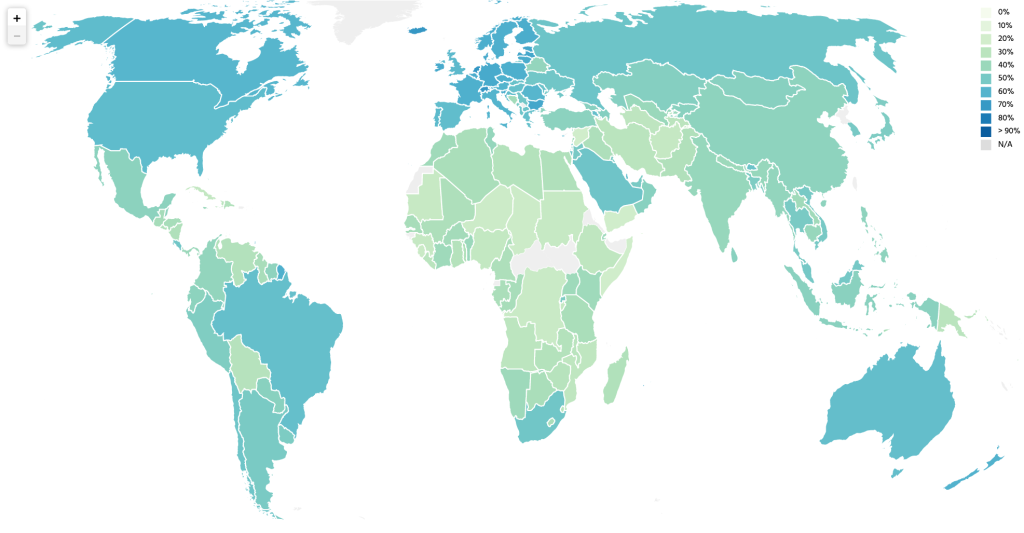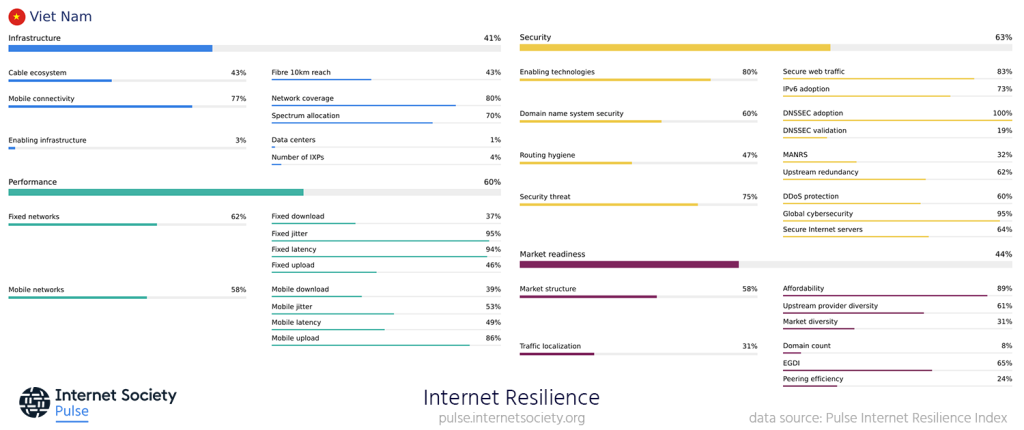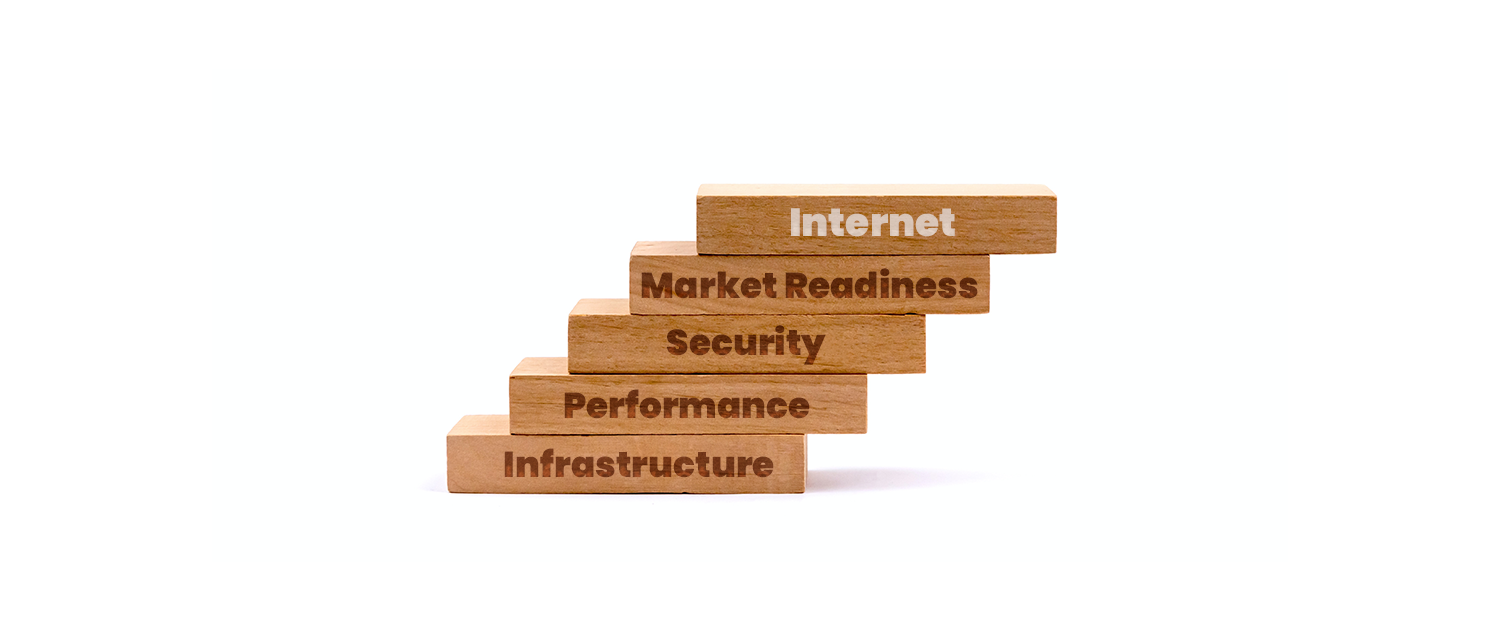The COVID-19 pandemic underlined the importance of reliable Internet connectivity for everyone. While the Internet’s infrastructure was largely able to cope with the sudden surge in use during stay-at-home orders, the limitations of other supporting components, such as security, performance, and supporting markets, have come to the fore.
For the past three years, the Internet Society has been developing the Pulse Internet Resilience Index (IRI) that collates and tracks open-source Internet resiliency metrics to support policy-makers in their decisions related to improving the Internet’s resilience at a local, regional, and global level. While the original version first published in 2021 only tracked Internet Resilience for Africa, the next iteration now allows you to track Internet resilience for more than 170 countries.
Check the resilience of your country’s Internet
Measuring the Internet’s Resilience by its Pillars
The IRI draws upon more than 20 open data sources and uses best practice methodologies to calculate a snapshot of a country’s Internet resilience in terms of its:
- Infrastructure — The existence and availability of physical infrastructure that provides Internet connectivity.
- Performance — The ability of the network to provide end-users with seamless and reliable access to Internet services.
- Security — The ability of the network to resist intentional or unintentional disruptions through the adoption of security technologies and best practices.
- Market Readiness — The ability of the market to self-regulate and provide affordable prices to end-users by maintaining a diverse and competitive market.

You can view how your region/country compare to its neighboring regions/countries to understand global and regional resilience and zoom into your country’s IRI profile to understand its strengths and weaknesses.
For example, if we look at South East Asia we can see that Viet Nam’s IRI score of 52% ranks second in the region (Figure 2).

If we zoom into its profile (Figure 3), we can see that its ‘Security’ and ‘Performance’ indicators contribute most to this score, especially its fixed network latency and jitter rankings, mobile upload speed, DNSSEC adoption, and Global cybersecurity scores. Jitter is a variance in latency or the time delay between when a signal is transmitted and when it is received.

Conversely, its low data center and Internet Exchange Point (IXP) count is impacting its ‘Infrastructure’ score, as is its low Domain count on its ‘Market Readiness’ score.
Identify Weaknesses to Make Data-Driven Decisions
In the above case, decision-makers can use this snapshot and conduct further local investigations to validate these figures, given they are based on external measuring sources.
From this, they could make a data-backed case to target low-scoring components through policies or grant-giving instead of historically more popular components, such as improving network coverage or decreasing latency.
Let Us Know What You Think
If you have any questions or comments about the IRI, please get in touch with the Internet Society Pulse team and subscribe to the Pulse monthly newsletter to get updates and insights into changes to Internet resilience.
Explore the Internet Resilience Index
Photo adapted from original by Volodymyr Hryshchenko on Unsplash.


